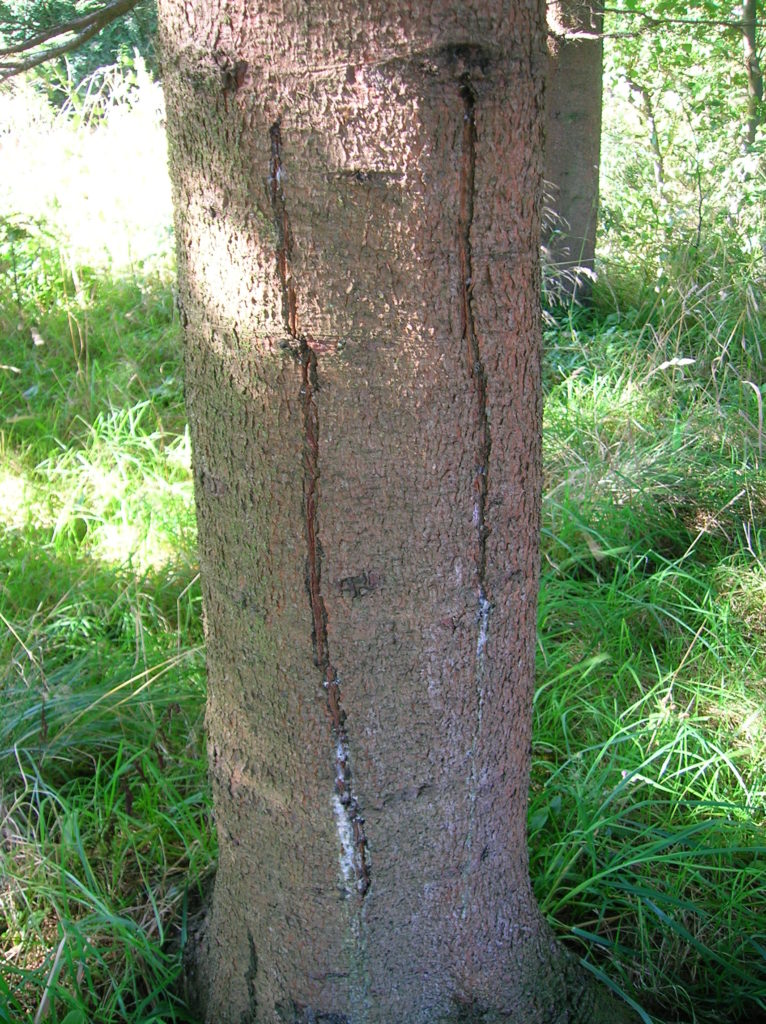During the winter months, a cold, dry air descends upon the northeast. It spreads quickly, a pervasive chill that seeps into the soil and lingers amongst the trees. Many trees are not immune to its effects, and must contend with a type of winter injury called frost cracking. The following is an overview of frost cracking and how it impacts tree throughout the winter.
What Is Frost Cracking?
Frost cracking, also referred to as southwest canker or radial shakes, is a type of winter injury that occurs in the bark of trees. It is most prevalent in younger trees, and trees with thinner bark.
What Causes Frost Cracking?
Frost cracking occurs when a sharp drop in temperature causes the outer layer of a tree’s wood to contract more rapidly than the inner layer. This results in the formation of a long vertical crack at the weak point of the trunk.
Frost cracks are most evident in the winter. When spring arrives, trees begin to absorb more moisture, and most frost cracks close and callus over. In subsequent winters, they may reopen and enlarge, causing the wound to expand. Successive cracking and healing over a number of years can lead to the formation of large seams in the affected wood called frost ribs.
What Increases Susceptibility?
Frost cracking occurs most frequently on cold, sunny days, and affects the side of the tree most subject to sudden temperature fluctuations. Trees that have been previously wounded or improperly pruned are more susceptible to frost cracking, as defective wood does not contract as readily as healthy wood, and ruptures more easily.
Tree species that are most susceptible to frost cracking include london plane, oak, maple, horse chestnut, walnut, beech, elm, linden, and willow.
Prevention & Management:
Avoid wounding the bark of trees, especially when they are younger. Younger trees tend to have thinner bark, and can be more easily damaged. Yard work should be performed away from trees where there is no risk of bark injury.
Trees should be kept sufficiently hydrated throughout the year. Watering should persist until cooler temperatures prevail, and the ground has frozen over. Applying a layer of organic mulch around trees helps to insulate soil, and promote proper nutrient intake. It also restricts moisture loss during the cold winter months.
Evergreen shrubs can be planted around trees to insulate them from extreme temperature fluctuations and direct afternoon sunlight. White tree wrap can also be applied around the trunk and lower branches. Tree wrap helps to maintain a consistent bark surface temperature, and deflect sunlight.
When maintaining trees, avoid excessive pruning of the tree canopy. The lower branches often provide shade to the trunk, shielding it from dry winds and direct sunlight.
If frost ribs have formed on the tree, installing a brace in the affected area can prevent the crack from reopening. This promotes faster healing.
Any affected trees should be inspected annually to insure that they are free from decay or any other internal disease.
Photo courtesy of Roger Griffith
